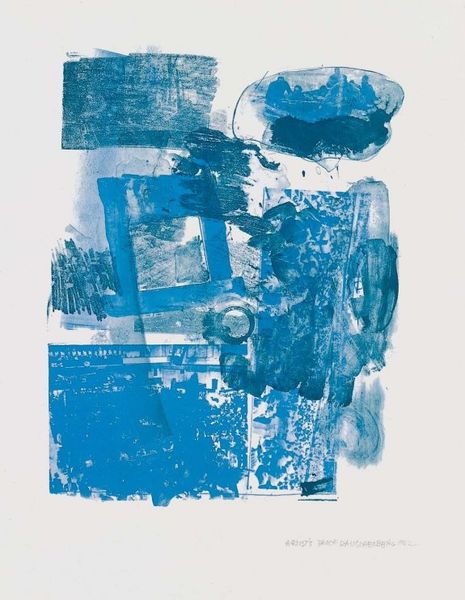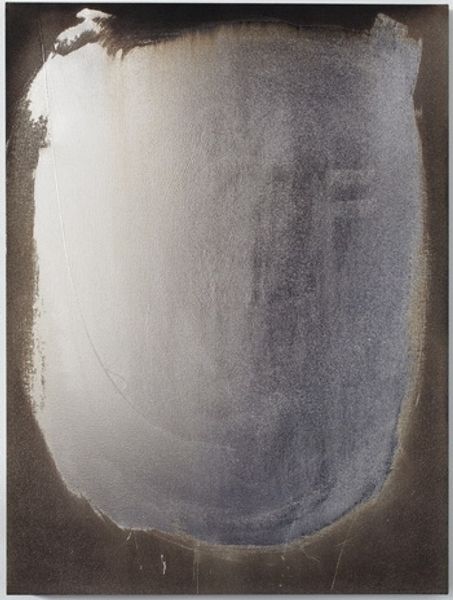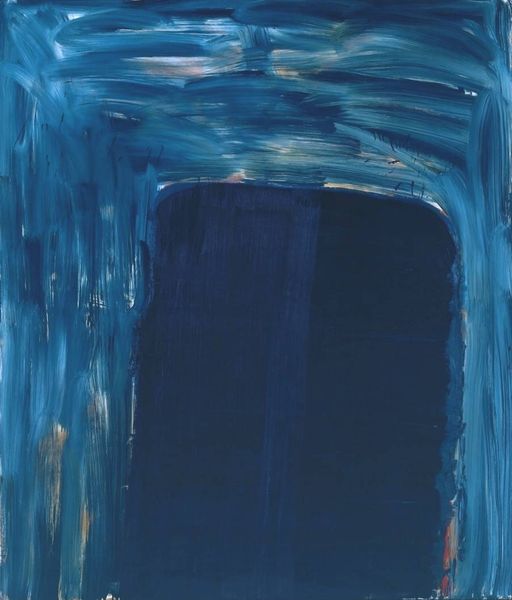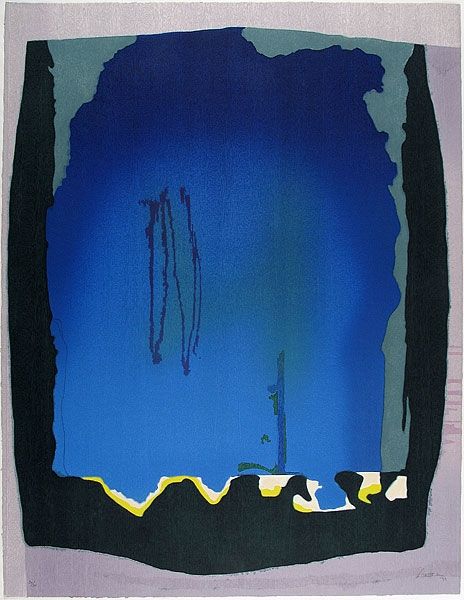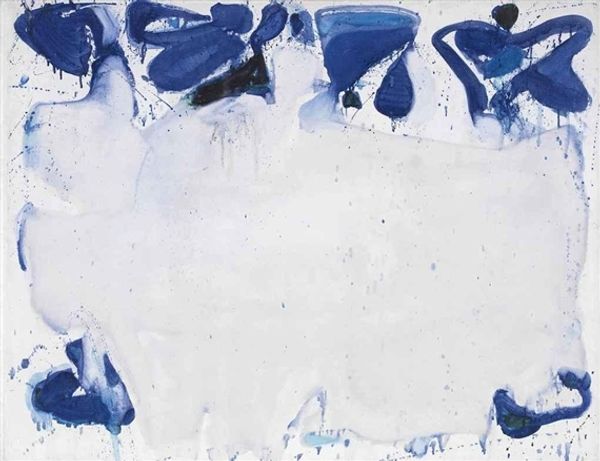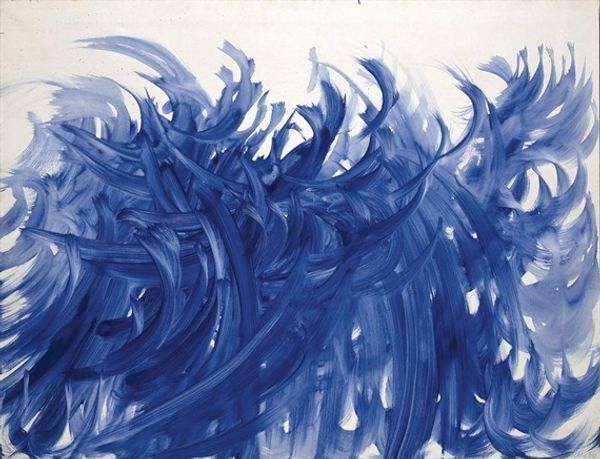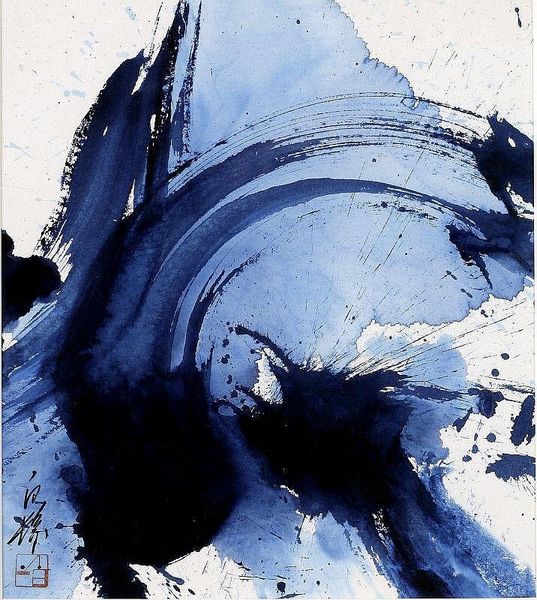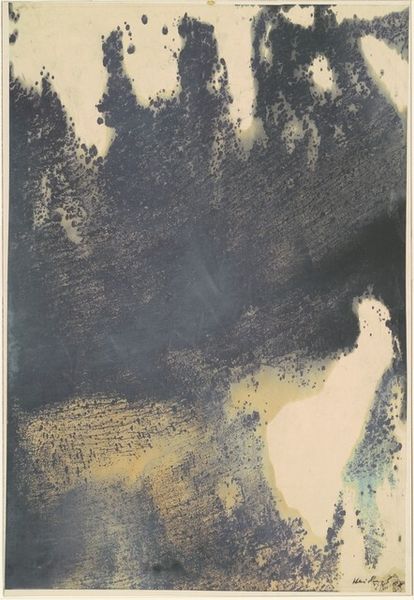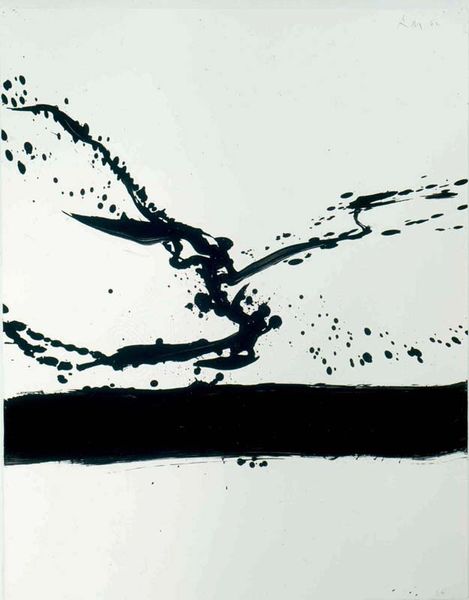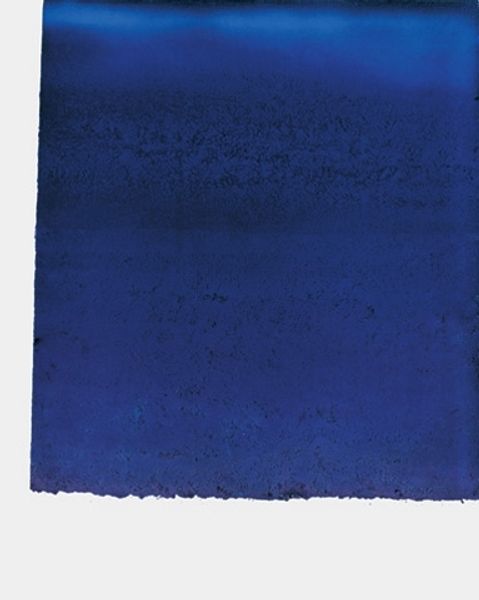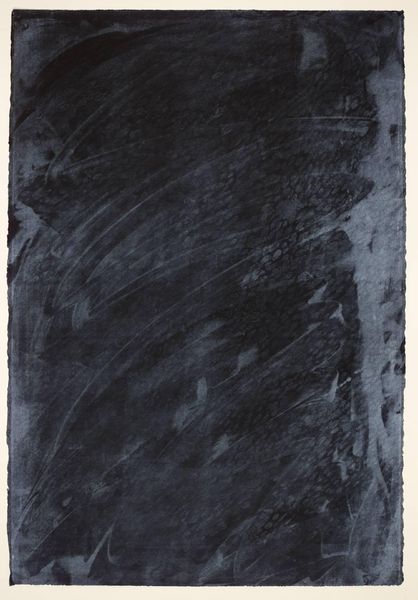
#
capitalist-realism
Copyright: Sigmar Polke,Fair Use
Curator: What strikes me immediately about this untitled piece by Sigmar Polke, crafted in 1999, is its overwhelming sense of… melancholy. A wash of monochromatic blue seems to drift across a dark background. Editor: Melancholy is an interesting entry point. As a historian, what do you make of that feeling given Polke’s wider oeuvre and the period? It is constructed using acrylic paint. Curator: Well, considering Polke's consistent engagement with social commentary and appropriation of mass media imagery throughout his career, this abstraction, stripped of obvious narrative, seems like a descent into personal introspection, a quiet reflection at the fin de siècle, if you will. This was a very generative period for the artist. Editor: Intriguing! Speaking formally, note the movement—the fluidity of the blue matter seems almost to defy gravity, suspended against the static, absorptive darkness. Consider also the balance: The composition has a certain asymmetrical quality, directing our gaze from the heavier mass at the lower half to a sort of dispersing wisp towards the upper right, yes? Curator: I see it similarly, yes. One interpretation could tie this ethereal quality to the political anxieties of the time—the quiet before the storm of the new millennium, if you recall. But perhaps its neo-expressionistic tendencies allows the viewer to focus simply on form rather than being weighed down by overt symbolism. Editor: True enough, Polke certainly resists easy categorization, playing with elements of chance and deliberate formlessness to unsettle our expectations. Do you see any reference to Pop art here? Curator: While direct appropriation is absent, the spirit of subversion and a certain cynical distance certainly echo Pop’s sentiments. This "Untitled" piece feels like a rejection of grand narratives. This feels quieter, smaller somehow, perhaps suggesting a shifting art market? Editor: Regardless, Polke makes us ponder about the inherent qualities of painting itself. It allows for that, doesn't it? Curator: Indeed. His constant experimentation leaves the interpretation quite open, creating this dialogue between what one sees and what one knows—an intersection that invites endless exploration. Editor: A testament to the enduring power of abstract art, and I agree with you: open ended art can only sustain if viewers are equipped to address it in more complex ways, historically or theoretically. Thanks!
Comments
No comments
Be the first to comment and join the conversation on the ultimate creative platform.

